Site officiel de Yoko Grandsagne

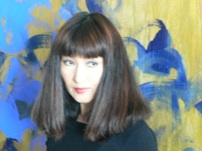
-
• ex Styliste-Designer chez Christian DIOR
-
• Créatrice du Mouvement RIMPA ART
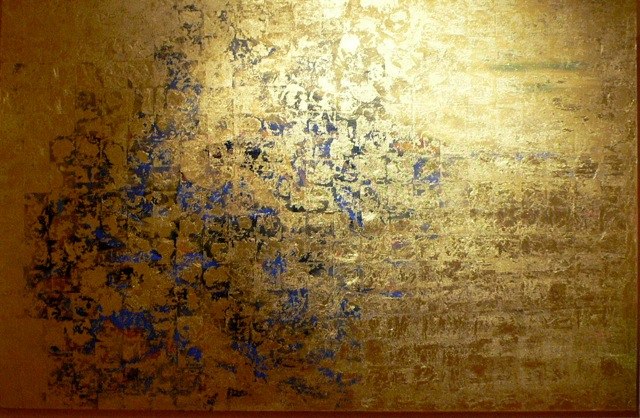
Iris celeste ( 2010 ) - Yoko GRANDSAGNE
195 cm x 130 cm, Technique mixte, Feuilles d’OR 24 carats
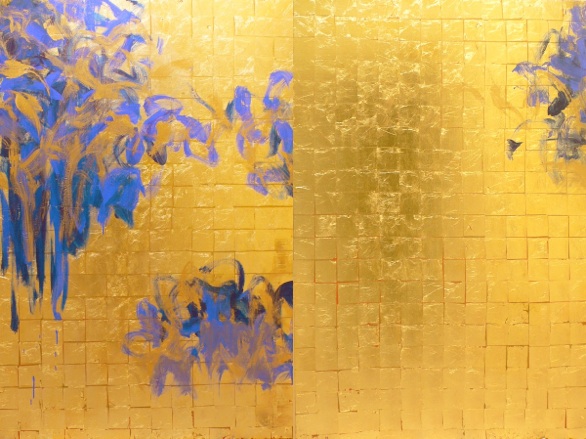
Iris ( 2010 ) - Collection permanente du MUSÉE DES ARTS ASIATIQUES de Nice
Yoko GRANDSAGNE - Technique mixte, Feuilles d’OR - 260 cm x 195 cm



Art of YOKO GRANDSAGNE
by Lydia Harambourg
Historien of art
Correspondant of Institut, Académy of Beaux-Arts
Universal poetry
What can a contemporary artist learn from art that is centuries old ?
Japanese art is not to be dissociated from its historical context. Calligraphy has always been a skill for the initiated of a cultured class since it is an act of meditation and knowledge practiced by learned artists. Yoko Grandsagne was trained in a western pictorial tradition, particularly fresco painting. She has now returned to the tradition of her ancestors. This implies a priority given to line which expresses joy, both physical and intellectual. The Rimpa School has elevated line to a level linking life to contemplation, beauty to simplicity inspired by nature.
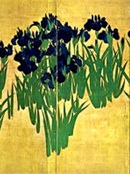
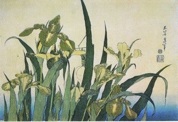
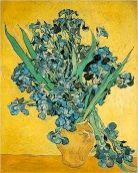
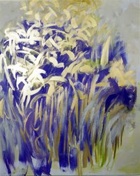
Iris ( vers 1705 )
Korin OGATA
(1658 - 1716 )
Iris et sauterelle ( vers 1833 - 1834 )
HOKUSAI
(1760 - 1849 )
Iris ( vers 1889 )
VAN GOGH
(1853 - 1890 )
Iris ( 2003 )
Yoko GRANDSAGNE
(1957 - )
If Rimpa art has had international status and renown since its initiator Tawaraya Sotatsa (died in 1643), reinterpreted by Ogata Korin (1658-1716), it was fundamentally inspired by a poetic power which has permeated Japanese culture in general. Familiar images of nature invite the artist or the poet to dream of an interior world with thematic variations accessing universal values. Words like “soul” and “inspiration” become one and the same. Yoko Grandsagne has chosen to reestablish a balance between human nature and cosmic unity by bridging a gap between the visible and the invisible world. In order to liberate her own personal interior vision, she has studied the beautiful paintings of the masters who came before her. The apprenticeship of her artistic vocabulary has gone through the assimilation of the appearance of natural forms: bamboo, leaves, trees and flowers. These are represented in their clarity and simplicity in order to satisfy the spirit, with the ultimate aim of finding a common origin of everything (to quote Emile Bernard who, in 1888 admitted searching for pleasure in the notion of quality in order to attain harmony).
By harnessing solar light and using bright colors, Yoko Grandsagne expresses an interior light which is, after all, the reflection of the exterior world. The use of acrylic mixed with gold leaf and gold powder is a signature of the Rimpa School. Gold enhances the poetical dimension of the works and revealing a passionate soul.
The phenomenon of the spirit associated with consciousness, brings together artists from different origins and ages. Yoko comes from the religious city of Nara. Her gestures, inherited from spiritual tradition, are strong and dense in accordance with her imagination and conscience. Her diptychs and triptychs, which remind us of XVIIth and XVIIIth century screens (Byôbu), lend themselves to poetic imagination. The realism with which she represents the iris is transcended by her desire to arrive at a plastic synthesis. Yoko Grandsagne is searching for a fusion between Oriental and Western art. This is what Monet understood from Japanese prints, which also left a strong impression on the work of Degas, Whistler, Redon and Lautrec. The linear sinuosity of Yoko’s works is a poetical way of paraphrasing the real world. Reality is transposed and becomes a pretext for osmosis with the universe. The spectator receives energetic power through finely painted contours evoking a Zen garden or simulating the flight of a bird, or flexible lines of a celestial landscape which fuse together in light conducting rays. Our eye follows the movement of the painter’s gesture which in turn elevates our spirit, through our imagination, to a symbiosis with the universe.
The fluidity of the marine element is expressed in a panel called Vague traversed by transparent vibrations. It is painted from the tip of a paint brush which is both supple and discreet contrasting with broken, abrupt blue curves which take possession of a second panel. By associating the iris, symbol of the messenger of gods, the personification of the rainbow and the purification of divine inspiration, Yoko Grandsagne gather the dream of a soul in meditation. If this word is often repeated as title for a painting, it expresses the quintessence of an artist’s jubilant work where psychic forces attain universal harmony.
© Lydia Harambourg
Historian, Critique d’art
Correspondant of Institut, Académie des Beaux-Arts
May 2010